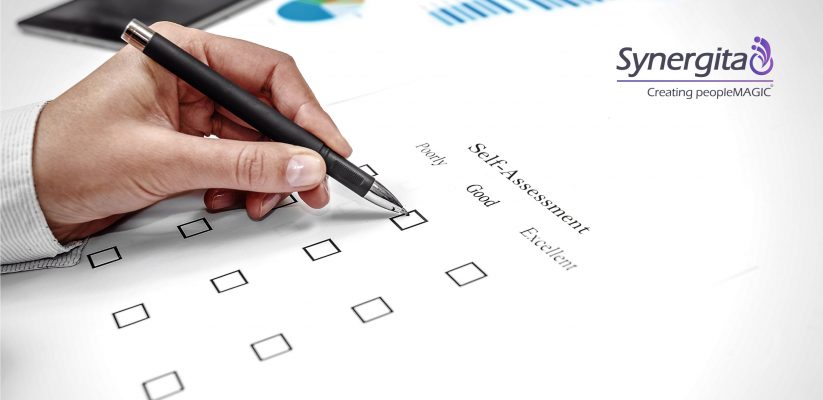Benefits of Self-Assessment in the Performance Appraisal Process
Annual performance reviews seem to have lost all meaning as employees and managers alike dread the meeting. Employees feel that performance appraisals are indelibly tied to their compensation, and managers dread the conversation, especially if they have criticism to offer. Fortunately, a more modern performance evaluation approach has emerged and includes frequent self-evaluation and peer reviews.
Generally, employees tend to find self-assessments a trifle challenging because they fear rating themselves too high or too low. Second-guessing their value to the organization is a common failing. However, with a comprehensive performance management solution, there are systems and processes in place that offer an accurate, analytical, and fair assessment. These tools emphasize future development and growth instead of past performance and have proven to be far more beneficial in retaining employees and keeping them engaged.
Before we look at the benefits of self-assessment, let’s understand what self-assessment is.
What is self-assessment?
Self-assessment is the ability to evaluate yourself and see your progress. As employees, you must monitor yourself to discover your abilities, strengths, and weaknesses. You are in the driver’s seat of your development. Some of the questions you can ask as part of self-assessment include:
- Were you able to achieve your goals?
- What goals do you wish you had accomplished?
- Where do you need support?
- Which achievement are you most proud of?
- What do you like about your job?
- What do you dislike about your job?
- What are the goals you wish to achieve in the next two years?
Questions like the ones listed above encourage exploring your performance and give you a better understanding of where you stand. The purpose of self-assessment is to help employees know how much they know and how to improve their abilities. This kind of introspection has several benefits for employees, managers, and the organization as a whole.
Benefits of self-assessment in the organization
When organizations implement self-assessment as a part of employee performance appraisal, they inculcate a culture of growth and development. When they do it right, they enable open communication and offer more significant opportunities for growth among their employees. For instance:
Employees take an active role
Self-assessment helps the employee feel more in charge of their performance. Instead of being recipients of feedback from their supervisors, they become active agents of their growth. Taking an active role in their own performance appraisal keeps them far more engaged with the organization and, thereby, more productive.
Employees gain a broader understanding
Managers gain a deeper insight into the employees’ overall performance when they see their direct reports’ self-assessment. Instead of limiting themselves to their perspective, managers get a complete picture by seeing how the employees perceive themselves. It helps them design the future growth of the employee.
Also Read: What’s an Effective Employee Performance Review Process – and How to Improve it?
Engaged Employees
More often than not, top-down evaluations can be discouraging. Employees feel judged unfairly and unable to present themselves in a fairer light. Self-assessment allows them to put forth their side of the story and opens up a two-way conversation with their managers. It is a process that enhances employee engagement and wins their trust.
Guiding principles behind Self-Assessment
To ensure that the workforce remains engaged and motivated, self-assessment must become integral to the performance appraisal process. The guiding principles behind self-assessment are well-defined activity parameters. It works best when coupled with a continual performance strategy with the OKRs clearly outlined. Moreover, a non-judgmental workplace fosters growth and development.
Ideally, performance appraisals must provide the employees with a platform to ensure that they can be honest in their answers. Furthermore, it must give employees the space to express their goals, dreams, and perspectives without fear of reprisal and ensure that the purpose of introducing self-assessment is to bring a meaningful change within the organization. Therefore,
- Have well-defined goals and expectations at the outset.
- Ensure visibility of the performance criteria and metrics to identify the parameters for self-assessment.
- Ensure that the appraisal is continuous and not merely at the end of the year.
- Include the organization’s core values and objectives in the appraisal process.
Conclusion
With the workforce scattered and working remotely in the wake of the pandemic, it is critical to implement a frequent and continuous performance evaluation. And a part of the evaluation must include self-assessment, as it supports the 360-degree feedback system that is a win-win for the employee and the organization. Advanced technology and AI-enabled tools help implement an appropriate performance management platform to bring out the best among employees at all levels and motivate them to exceed expectations or seek support for improvement, where necessary.
Performance Appraisal Product Details:
Trial Link –> Click here
Demo Link –> Click here
Product Pricing –> Click here
Product Link –> Click here
